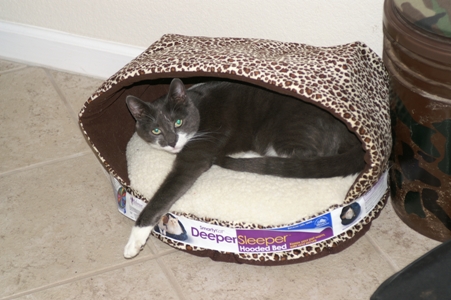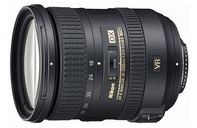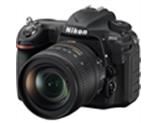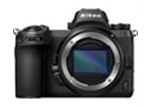
Tuesday 10:25 PM
| Public Links |
|---|
| - CenTex NWS Alerts |
| Synapse Misfires |
|---|
| - Eww, That Smell |
| - Here Ya Go! |
| - Texas Weather |
| - Takes a Village |
| - It Was Vewy Quiet |
| - TPWD Geocaching |
| Not Logged In |
| Originals |
|---|
| - On Photography |
| Not Logged In |
| Topical Collections - My Online Memory |
|---|
| - HippoFan Geocaching |
| - Home Automation |
| - 3D Printing |
| - Build Your Own Server |
| - Amateur Radio |
| - Daily Compute |
| - Recreational Vehicles |
| - Drones |
| - Live Streaming |
| - Smokers |
| - Woodworking |
| Not Logged In |
I have enjoyed photography for most of my life. I inherited this gene from my father, he was a photobug for decades using a little Argus 35mm primarily for slides. He had boxes of them, I scanned hundreds of slides for my parents' 50th wedding anniversary a few years back. [ Sidenote: it was amazing how well the magic "Repair" button in the free software that came with the Canon 4200F scanner fixed the sepia-tinted slides. ]
My sister and I received our first black and white cameras in the late 1960s, they were 120 or 135 format film models and had about a half-inch long shutter release throw. I think 95% of the pictures taken with both cameras were of the family dog, a hard habit to break even now. The shutter release didn't help the stability, but I did learn to hold the camera still while squeezing the release. I later received one of the Kodak X-15 cameras with the drop-in film cartridge, it's probably still in a drawer or box somewhere. It had the flash-cubes that connected on the top and had four flashes each. Pretty cool tech back then.

During high school I desperately wanted the Minolta SRT-101, but those were way out of my price range. I was making less than $2.00 an hour, and had a greater desire to be behind the wheel of my car than behind a viewfinder.
Before I left for college my Dad bought himself a Pentax K1000 35mm SLR. It had absolutely nothing in the way of automation, but that simple light meter in the side of the viewfinder taught me a lot about what to expect when I picked up the prints. It also gave me a pretty good feel for how different things affected the exposures. But that camera stayed with my Dad when I went off to school.
I worked behind the camera and electronics counter at Wal-Mart #137 in Stillwater, Oklahoma my senior year of college and drooled all over the new Minolta Maxxum 7000 auto-focus 35mm camera and a couple of similar models from Canon, the T50 and T70.
As you might expect, my first major purchase once I graduated and got settled was that Maxxum 7000 I had wanted for so long. I paid what seemed like a fortune for it, but it came with the kit, a 50mm f1.7 lens, a cheap tripod, very basic bag, cheap dust blower, and a free roll of film. Needless to say, that film was consumed before the night was over. I took pictures of the fire in my hibachi. I took pictures of the traffic on Centerline Road and managed to capture the headlight and taillight trails I thought were so cool in National Geographic's very long exposures. I used up the roll and walked it across the road to Albertson's to get it developed in a painful and frustrating 4 or 5 days.
At the time I was working for Micropac Industries, Inc in Garland, Texas. We used photographic methods to process certain facets of the manufacturing process so naturally the company had a dark room for developing and printing black and white film. I knew the photographer pretty well, so when he found out I had a new Maxxum 7000 he asked to see it. I brought it in so he could see the camera, but he took my precious new roll of color film out for storage in a temporary canister, then re-wound the film spool with some 100 ASA black and white film from his own bulk rolls. He sent me out to take pictures of "whatever" and said to bring it back after lunch so we could see how it all worked. After watching the whole process of developing the black and white film and making a contact sheet I was hooked. It didn't matter if the subject was a bank building in downtown Garland or a pipeline sticking out of the ground behind the plant, I wanted to photograph it. And I wanted a darkroom. I just could not bear to pay for the stores to print my photos, and the week waiting for the results was kind of painful too.
I believe these last few points have shaped my fascination with digital cameras over the past decade.
• I do not like to pay to print a lot of pictures, especially when some are less than spectacular.
• And I cannot stand waiting for days to see if it came out the way I imagined.
I never did set up my own darkroom but I did buy a fancy AF4000 flash unit and a 70-210mm lens for the Maxxum. I carried that camera all over the place for about 15 years, from California to Scotland, from Massachussetts to Mexico. I gave it to a friend when I bought an 800si in 1999 or 2000. The 800si was an awesome camera, with an incredibly powerful built-in flash and a data back. I learned about circular polarizers, various filters, and the value of better lenses with that model and carried it all over for a few years until the digital revolution began.
My sister-in-law worked carried a little Olympus digital camera, either the C2020 or C2040. She was using it at a family Christmas gathering one year and was more than happy to to share her thoughts and experiences. My wife seemed to really like the idea so I started exploring the world of digital photography. Olympus announced a new C3030 to arrive the following spring or summer so I visited Precision Camera in Austin to learn the whats and whens. They had three on their way (ETA unknown) so I left my phone number and said call me when they arrived. A few weeks later I got the call and bought it on the spot. For the wife, of course.
It was a great little camera, with the sole irritation being the limited capacity and high cost of smartmedia memory cards. No second source and a 64MB card from Olympus cost close to $100!
A couple of years went by and I had a business trip to Taipei, Hong Kong and Shunde, China. I didn't have much room to pack for a two week trip so I decided to take the C3030 instead of the 800si. Under the right conditions the C3030 does a wonderful job, but the late night Hong Kong city skyscape images were terrible. Sure, it has a timer function and offers long exposures, but there's only so much you can do with tiny glass and sensors. Don't get me wrong, I came back with some great pictures of the trip, I was just frustrated by the difficulty of taking decent pictures when conditions were less than ideal.

All the way back I kept thinking "If only there were alternatives to the multi-thousand dollar Nikon digital SLR..." So just to see what was going on in that realm I started researching digital SLRs and again visited my friends at Precision Camera. That was the day I first held a Minolta Maxxum 7D, the 6.1mp digital SLR that would accept the lenses I already owned! Wow, did it feel nice in my hands, and BOY, was it ever expensive! Time to explore a little bit more.
Several things happened over the course of the next few days and weeks that made me believe the stars were properly aligned. Star number one: my company sold Konica-Minolta products. We didn't get employee discounts the way we did on our company's products, but still, it's a start. Star number 2: one of the guys on my China trip worked in my company's procurement department. Assuming that all the procurement people knew one another, I asked if he knew the Konica-Minolta rep. That got me the name of someone at K-M who deals with his company's employee discounts. He was able to work me a similar deal. Star number three: my wife was actually receptive to the idea of me spending that kind of money on a new camera and good lens. Actually two lenses, saving roughtly 20%-25% off retail let me add the 100-400APO lens to my order, a spectacular lens by almost any measure. As luck would have it, the only thing missing on my dream order was the back-ordered 100-400APO lens. Everything else showed up in about a week. The 100-400 was backordered until K-M sold the camera division to Sony and the lens never made it my camera.
Finally, real digital photography was available to me any time I wanted. The battery life was fantastic. The LCD was not in constant use like a point-and-shoot so the batteries were good for extended periods of time. They were good for hundreds of shots, even using the flash. I bought two, so one was always charged and ready as a backup. In almost 4 years of use and thousands of photos I only run out of juice once, and that was my own bad planning.
I had been spoiled by the 800si's integrated flash, it was one of the most powerful in the industry and provided an enormous amount of light when needed. The 7D's integrated flash was a real disappointment. It is weak to the point of being almost unusable for any pictures except those of very close range.
A few years a exploring the 7D and real digital photography brought me to the next phase, the Nikon phase. I had examined the N80 (35mm) and family before I bought the 800si. If I had not planned to reuse my existing Minolta lenses I would have probably brought the N80 home at some point. In retrospect, since I gave away a Sigma zoom lens with the 7000 it was kind of silly to stay within the Minolta family because I really only had a 50mm f1.7 lens before buying a 28-200. But I was somewhat emotionally attached to the Minoltas and hoped the AF4000 would also be useful. It wasn't, but as I mentioned, the 800si flash was nice enough to handle almost all of my flash needs.
Back to the Nikons, I liked the D80 from the first time I saw it, the performance and the feel seem to fit me pretty well. It came out shortly after I got the 7D so there was no way to rationalize a purchase especially at the $1200+ price point. When its successor came out the D80 dropped to about $700 with a basic (28-80) kit lens.
Circuit City was clearing out their cameras (along with everything else!) in January and February of 2009. The first time I visited looking for a bargain it was almost insulting. The huge "business-closing clearance sale" was like anybody else's ordinary sale. A few weeks later the prices were much better. I was tempted to pick up the D90 for $1039 but the four digit price remained a mental barrier even though it was a decent price by anyone's measure.

My daughter had started asking questions about the D40 at Christmas that year. Her Nikon S7 was showing quite a bit of wear after a few years of regular use so I thought of her when Circuit City's prices finally hit 20% off. The D40 (6 MP + 18-55VR) was still $400, but the D60 (10MP + 18-55VR) was $474. So she got the D60 for her birthday.
Skip forward to the early part of 2010. My wife wanted to take a fairly major (domestic) vacation and the perfect opportunity arrived when a friend asked if we wanted to join three couples on a tour of New England in October. If you're reading this then you already know that any real vacation requires comparable photography equipment, and it didn't take long to get the final approval. This was precipitated when the D90 with the much-celebrated 18-200VR lens appeared on a list of incredible Nikon/Adorama deals on Ken Rockwell's photo website. I got the package for about what the D90 + 18-105VR would cost retail with tax. I even managed the ML-13 wireless remote!
Short review: the D90 was an awesome camera. I thought the 7D felt like a real camera, but the D90 trumped it! It focused quicker, shoots something close to HD video, has a 900K+ pixel LCD with liveview, and it's a Nikon. Add a stretchy camera strap, a UV or clear lens filter to protect the business end and I had more camera system than I knew what to do with. Lots to learn and lots to experiment with.

The 18-200VR lens was amazing. On the D90's DX-size sensor, it was roughly the equivalent of a 28-300 on an FX or 35mm camera. Plenty of range, wide enough for most indoor use and able to reach out for longer distance shots.
If you're not fluent in the Nikon realm, the DX cameras have a physically smaller sensor than the higher end FX cameras. They call it a crop sensor, and you can think about it as being the center section of a larger sensor. So when you put, for example, a 16mm lens on a DX sensor camera, it acts like you've "cropped" the center section out of the sensor by capturing a smaller section of the lens's view. It has the same visual effect as "zooming" in to an area about the same size as the 24mm lens would show.

I bought a D500 with the AF-S DX 16-80mm f/2.8-4E ED VR lens in August of 2016. Short review: the fastest, most accurate autofocus capabilities I've ever seen and extremely high speed bursts.
In April of 2021 I traded the D500 in for a used Z7, my first FX camera and my first "real" mirrorless. It's the same autofocus as the D500, slightly lower burst rate (45M pixel images will do that). I got the FTZ adapter for my existing F-mount lenses, and the nice Z 24-70mm f/4 S lens. Shortly after that I picked up the F-mount Nikon 14-24mm F/2.8G AF-S ED. It's an F-mount to share among all the cameras, and the wide-angle F/2.8 for night skies. Shortly after that Nikon had the sale of all sales and I bought the excellent 200-500mm F/5.6 AF-S ED VR to bring in things at a distance. I almost rented/bought this lens before an Alaska cruise in 2019 but didn't due to its size. It's not terribly mobile.
January 1, 2023 I ordered the Z7ii. It's the newest upgrade of the Z7, with two internal processors leading to higher performance, and the addition of an SDHX card slot for backup or overflow. On the 6th I traded the "old" Z7 + 24-70 for a new 24-120 F/4 S as the walkabout lens.
Short reviews on all these to come, plus a review of the iOptron SkyGuider Pro. My lunar eclipse picture was nice, but I think I can do better.
Popular challenges and activites to help build your photography skills
What have I learned from the use and misuse of filters?
|
"Patriotism is as much a virtue as justice, and is as necessary for the support of societies as natural affection is for the support of families." - Benjamin Rush |
| Geek Humor |
|---|
|
Q: How many C++ programmers does it take to change a light-bulb? A: Only one, but it takes him all night, and when he's done the refrigerator and toilet don't work. |
| Regular Reading |
|---|
| Blogs and RSS Feeds |
| Special Archives |
| People of The Son |
| People of the Gun |
| Groups of the Gun |
| People of the Hack |
| Legal Eagles |
| Mine, all Mine |
An exercise in truly free free-speech. No license required, no training wheels available.
"When words lose their meaning, people will lose their liberty." -- Confucius
vincit omnia veritas